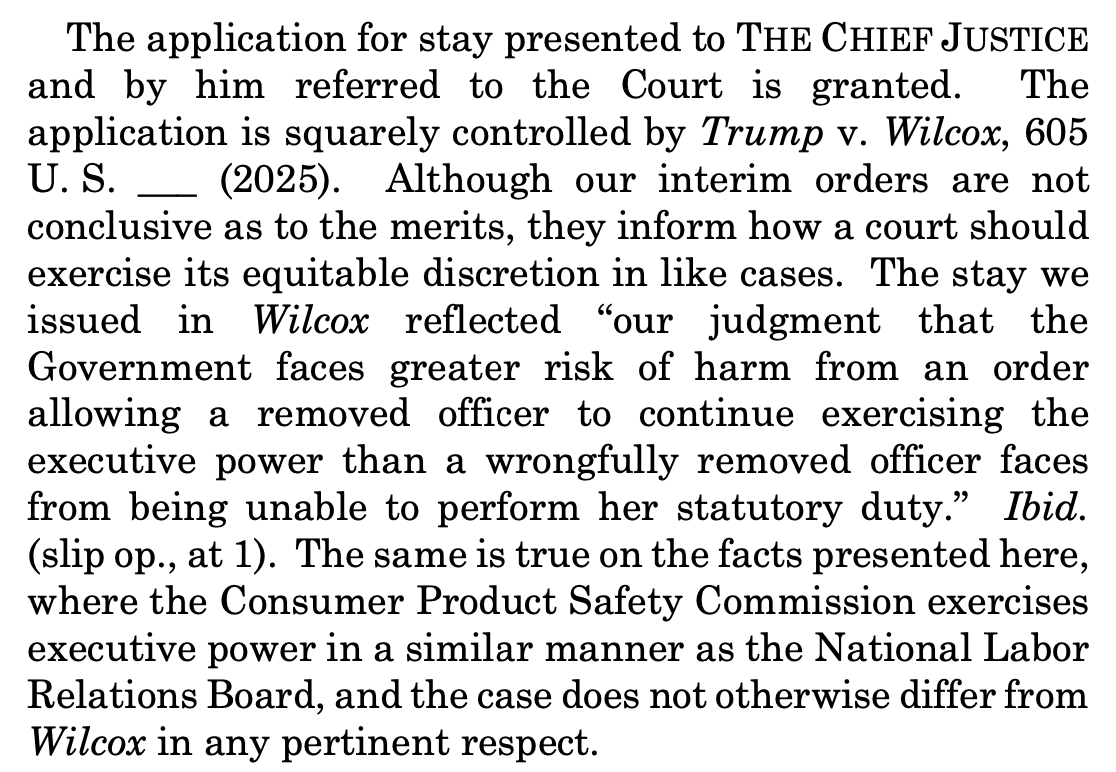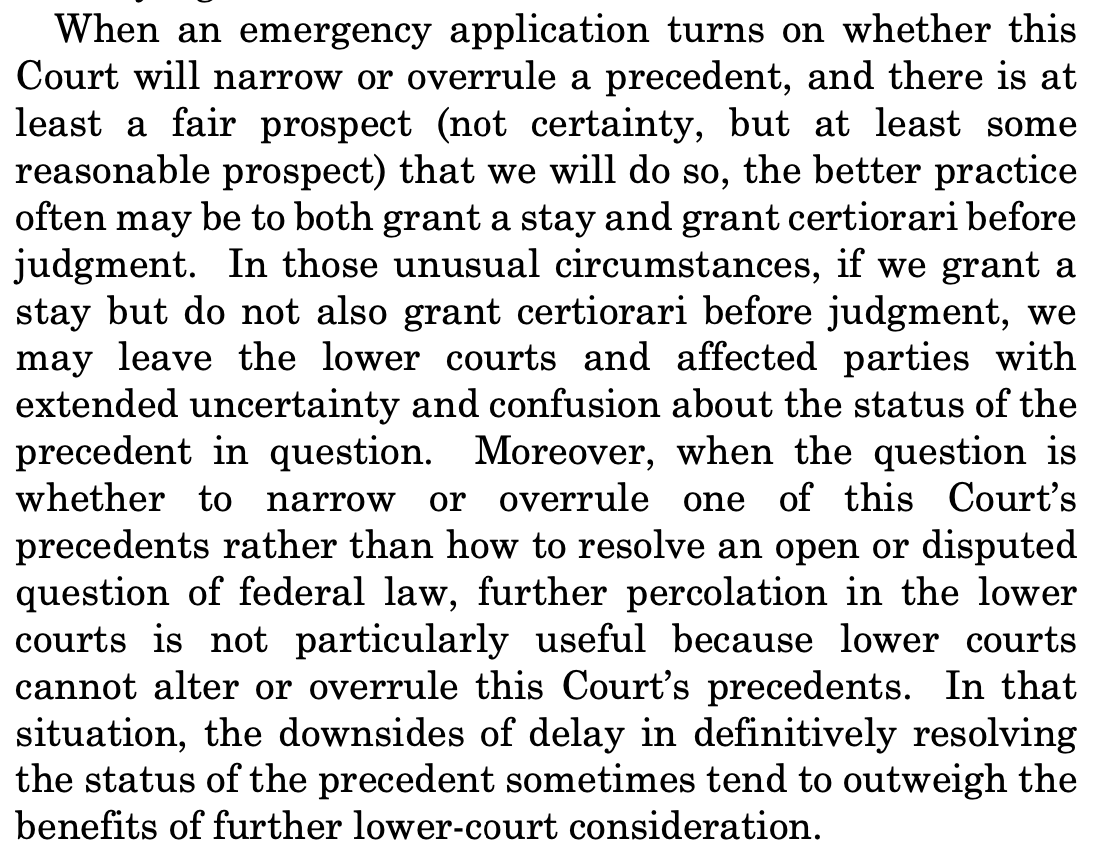Supreme Court conservatives hide behind their own masks as they upend the law
When the rule of law is under attack, there are few things as disturbing as a judicial system led by people who also appear eager to avoid accountability for their acts.
Five pages rarely tell us much — but sometimes they can say everything.
On Wednesday night, Chief Justice John Roberts made clear that he and his band of conservative justices are little different than the masked ICE agents terrorizing neighborhoods, courtrooms, and metro stops.
As Justice Elena Kagan wrote in dissent in yet another case over President Donald Trump’s efforts to fire officials in ways that violate federal law, “Once again, this Court uses its emergency docket to destroy the independence of an independent agency, as established by Congress.”
Like the masked ICE agents, the Republican appointees of the Supreme Court are fine upending law — but they would prefer to do so in nameless orders without the accountability the legal system is supposed to provide.
If that seems overwrought, let me explain.
Trump is lawless. He does not believe the rule of law applies to him and he believes the rule of law, as he interprets it, can be applied to anyone else. On Thursday, Columbia University was the latest to capitulate to this authoritarian reasoning, following Paramount, and going all the way back to Brad Karp’s Paul Weiss capitulation.
The U.S. Supreme Court and Congress are supposed to stand up to this and other lawlessness.
Neither branch is stepping in, as I’ve discussed previously, and the Supreme Court, on Wednesday, cleared the path for more lawlessness yet again.
The Supreme Court’s conservatives issued an unsigned order blocking a lower court’s injunction — granting a stay pending appeal — in a case over Trump’s effort to fire Mary Boyle, Alexander Hoehn-Saric, and Richard Trumka Jr., members of the Consumer Product Safety Commission nominated by then-president Joe Biden and confirmed by the Senate to those roles.
Trump fired them, despite a restriction on that removal in federal law — “for neglect of duty or malfeasance in office but for no other cause.” The Supreme Court ordered on Wednesday that their firings would be allowed to take effect as the cases proceed.
This is a big deal, and the justices know it.
There have been efforts to increase the president’s removal powers blessed by the Supreme Court, but Humphrey’s Executor, a 1935 case involving the Federal Trade Commission, has stood for the fact that removal restrictions are permitted for members of bipartisan multi-member agencies.
Currently, a move is afoot to end even that. It would be an extreme aggrandizement of executive power, essentially banning Congress from passing laws that limit agencies from having any carry-over in membership from one administration to the next. It would be the end of independent agencies in America’s federal government.
On May 22, heading into a holiday weekend, the Supreme Court backed that effort on the shadow docket in an unsigned, four-paragraph order.
The court’s right-wing majority insisted that “we do not ultimately decide“ the question — essentially, whether Humphrey’s Executor should be overruled — because “that question is better left for resolution after full briefing and argument.“ At the same time, however, the unsigned order in those two cases — over members of the National Labor Relations Board (NLRB) and Merit Systems Protection Board (MSPB) — states that “the Government faces greater risk of harm from an order allowing a removed officer to continue exercising the executive power than a wrongfully removed officer faces from being unable to perform her statutory duty“ and, accordingly, their firings would be allowed to take effect during the litigation.
Justice Elena Kagan, for herself and Justices Sonia Sotomayor and Ketanji Brown Jackson, explained what happened. Noting that Trump “believes that Humphrey’s should be either overruled or confined,“ Kagan continued, “[N]ow the President has discharged, concededly without cause, several such officers, including a member of the NLRB (Gwynne Wilcox) and a member of the MSPB (Cathy Harris). Today, this Court effectively blesses those deeds. I would not. Our Humphrey’s decision remains good law, and it forecloses both the President’s firings and the Court’s decision to award emergency relief.”
Enter the CPSC case.
On June 13, U.S. District Judge Matthew Maddox found that the removal restrictions were constitutional — under Humphrey’s Executor — and, as such, the firings were illegal.
On June 23, Maddox, a Biden appointee, denied DOJ’s request for a stay of the ruling pending appeal, noting that Humphrey’s Executor “remains good law“ and that “the public’s interest in protection from hazardous and unsafe consumer products to exceed the public interests presented in support of the injunctions stayed by the Supreme Court’s order in Wilcox.“
On July 1, a three-judge panel of the U.S. Court of Appeals for the Fourth Circuit also denied DOJ’s request for a stay pending appeal. Judge James Wynn, concurring, noted (again) that Humphrey’s Executor remains good law and more fully explained why the Wilcox order did not change the groundwork for lower courts:
DOJ ran to the Supreme Court the next day. After briefing was completed, Solicitor General John Sauer — Trump’s former personal lawyer — sent notes to the justices all but tattling whenever another judge dared to apply Humphrey’s Executor as remaining good law.
A Supreme Court practicing law would have responded by, even if it granted the stay, explaining to Sauer and the nation what Wynn had already told DOJ about appellate process and the shadow docket — citing the justices own writings.
That was not what we got.
Instead, the masked men (and woman) allowed Trump to sack the Democratic members in a two-paragraph order that was nonsense.
The second paragraph is just rote language about the technical process for the stay the court issued.
Whoever wrote this had to write in a circle because they, too, knew it was nonsense. How can a four-paragraph order from June on the shadow docket with only three paragraphs of reasoning — one of which was to claim that any reasoning in the first two paragraphs didn’t apply to the Federal Reserve Board — be “squarely controll[ing]” in other cases when even the author admits — as they would have to do — that “our interim orders are not conclusive as to the merits“? What is “squarely controll[ing]” and how is a judge to know that?
Kagan called bullshit on this move, dissenting (again) with Sotomayor and Jackson.
“The majority, through its stays, has prevented Congress from prohibiting removals without cause. On the Court’s emergency docket—which means ‘on a short fuse without benefit of full briefing and oral argument’—the majority has effectively expunged Humphrey’s from the U. S. Reports.” she wrote, quoting from an earlier opinion by Justice Amy Coney Barrett. “The majority’s sole professed basis for today’s stay order is its prior stay order in Wilcox. But Wilcox itself was minimally (and, as I have previously shown, poorly) explained.“
Explaining the meaninglessness and lawlessness of this exercise, Kagan continued:
It contained one sentence (ignored today) hinting at but not deciding the likelihood of success on the merits, plus two more respecting the “balance [of] the equities.” … So only another under-reasoned emergency order undergirds today’s. Next time, though, the majority will have two (if still under-reasoned) orders to cite. “Truly, this is ‘turtles all the way down.’”
The “turtles” quote is a citation to an opinion from then-justice Antonin Scalia.
Even Justice Brett Kavanaugh pointed out how lawless and hide-the-ball this all is:
In short: If we’re going to upend the law, we should have to get on with it — and show our work — on the merits docket. That would mean full briefing, including from outside parties; oral argument, when advocates and the justices can discuss the issue and consequences of any decision; and more developed — and signed — opinions.
But, Kavanaugh — who also wrote that he would have, accordingly, granted certiorari before judgment in either this case or the earlier Wilcox application — could not get his colleagues on board with that. (That didn’t, however, stop him from then concurring with their stay order.)
That, in turn, tells us something else important: This law-by-shadow-docket effort is intentional and is happening despite an effort by a member of the conservative majority to move cases onto the merits docket.
John Roberts likes the mask.





![applicant's likelihood of success must be made under 'existing law.'" NetChoice, LLC v. Paxton, 142 S. Ct. 1715, 1716 (2022) (mem.) (Alito, J., dissenting from grant of application to vacate stay) (quoting Merrill, 142 S. Ct. at 882 (Roberts, C.J., dissenting from grant of application for stays)). Indeed, Wilcox itself explicitly stated that it "d[id] not ultimately decide in this posture whether the NLRB or MSPB" were constitutionally required to permit the President to remove their officers at his pleasure, because "that question [was] better left for resolution after full briefing and argument." 145 S. Ct. at 1415. So, the distinguishable stay order in Wilcox is not enough to tilt the likelihood-of-success analysis here.* applicant's likelihood of success must be made under 'existing law.'" NetChoice, LLC v. Paxton, 142 S. Ct. 1715, 1716 (2022) (mem.) (Alito, J., dissenting from grant of application to vacate stay) (quoting Merrill, 142 S. Ct. at 882 (Roberts, C.J., dissenting from grant of application for stays)). Indeed, Wilcox itself explicitly stated that it "d[id] not ultimately decide in this posture whether the NLRB or MSPB" were constitutionally required to permit the President to remove their officers at his pleasure, because "that question [was] better left for resolution after full briefing and argument." 145 S. Ct. at 1415. So, the distinguishable stay order in Wilcox is not enough to tilt the likelihood-of-success analysis here.*](https://substackcdn.com/image/fetch/$s_!oBE7!,w_1456,c_limit,f_auto,q_auto:good,fl_progressive:steep/https%3A%2F%2Fsubstack-post-media.s3.amazonaws.com%2Fpublic%2Fimages%2F1a39f99a-3b2e-4d64-8f35-dc65727b81d5_1300x696.png)


Overruling Humphrey's Executor by way of ignoring it. This is the worst Court in the nation's history. What a malign conjunction of the stars it was that got us Trump 2.0 and the Roberts Court at the same time.
Fuckers